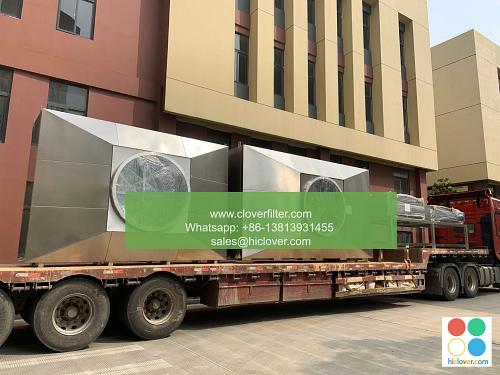The Science Behind Air Filter Widgets: How They Work and Why They Matter

Air filter widgets, also known as air quality monitors or indoor air quality (IAQ) sensors, are electronic devices that track and measure the quality of the air in a given space. These gadgets use advanced technologies, including Internet of Things (IoT) connectivity, Artificial Intelligence (AI), and Machine Learning (ML) algorithms, to detect and analyze various pollutants, such as particulate matter (PM), volatile organic compounds (VOCs), nitrogen dioxide (NO2), ozone (O3), and carbon monoxide (CO). In this article, we will delve into the science behind air filter widgets, their working principles, and their significance in maintaining a healthy and comfortable indoor environment.
Working Principle of Air Filter Widgets
Air filter widgets employ a combination of sensors and detection technologies to monitor and measure indoor air quality. These sensors can include:
- Optical sensors: use light to detect particles and pollutants in the air
- Chemiresistive sensors: change their electrical resistance in response to changes in air chemistry
- Electrochemical sensors: use electrochemical reactions to detect specific pollutants
- Inertial sensors: measure the mass and size of particles in the air
These sensors transmit data to a central processing unit, which uses AI and ML algorithms to analyze the data and provide real-time feedback on indoor air quality. The data can be displayed on a screen, sent to a smartphone or tablet via Wi-Fi or Bluetooth, or used to control air purification systems.
Application Areas of Air Filter Widgets
Air filter widgets have a wide range of applications, including:
- Indoor air quality monitoring: in homes, offices, schools, and hospitals to ensure a healthy and comfortable environment
- Air purification systems: to control and optimize air purification systems, such as HEPA filters, activated carbon filters, and UV air purifiers
- Smart homes and buildings: to integrate with other smart devices and systems, such as thermostats, lighting systems, and security systems
- Industrial and commercial settings: to monitor and control air quality in manufacturing plants, warehouses, and other industrial settings
- Environmental monitoring: to track and analyze outdoor air quality, weather patterns, and climate change
Benefits of Air Filter Widgets
The use of air filter widgets can have numerous benefits, including:
- Improved indoor air quality: by detecting and removing pollutants and allergens from the air
- Enhanced health and well-being: by reducing the risk of respiratory problems, allergies, and other health issues
- Increased energy efficiency: by optimizing air purification systems and reducing energy consumption
- Cost savings: by extending the life of air purification systems and reducing maintenance costs
- Improved productivity: by creating a comfortable and healthy work environment
Future Developments and Trends
The air filter widget market is expected to grow significantly in the coming years, driven by increasing awareness of indoor air quality, advances in technology, and growing demand for smart home and building automation solutions. Some of the future developments and trends in air filter widgets include:
- Integration with other smart devices: such as voice assistants, smart thermostats, and security systems
- Advanced AI and ML algorithms: to improve accuracy and reliability of air quality detection and analysis
- Increased use of IoT connectivity: to enable real-time monitoring and control of air quality
- Development of new sensing technologies: such as nanotechnology-based sensors and biotechnology-based sensors
In conclusion, air filter widgets are an essential tool for maintaining a healthy and comfortable indoor environment. By understanding the science behind these gadgets and their various application areas, we can appreciate the significance of indoor air quality monitoring and the benefits of using air filter widgets. As technology continues to evolve, we can expect to see even more advanced and innovative air filter widgets that will play a critical role in shaping the future of indoor air quality management.
It seems like you didn’t include a question or topic for me to address. Could you please provide more context or specify what you would like to discuss? I’m here to help with any questions or topics you’d like to explore.

